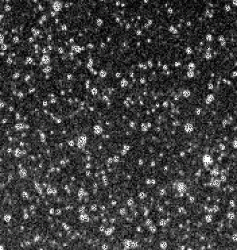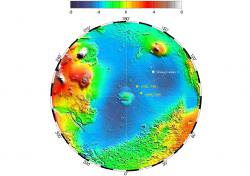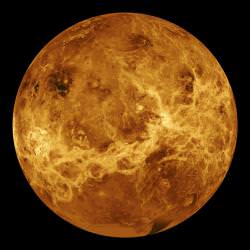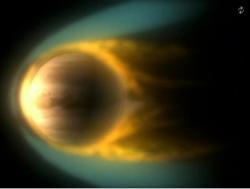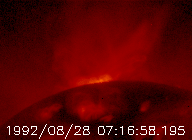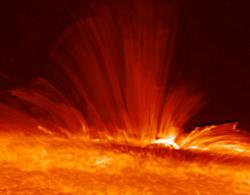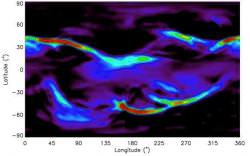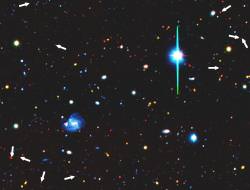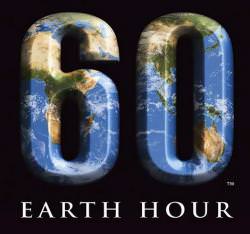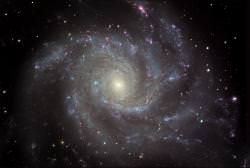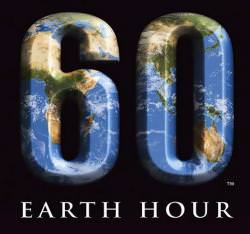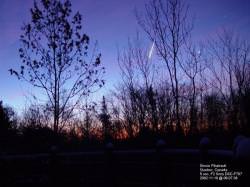Greetings, fellow SkyWatchers! What does the weekend have in store for those who observe the starry vistas with their eyes, binoculars, or telescopes? Let’s head out into the night, because the mysteries of the Cosmos await.
Friday, March 28 – For unaided eye observers, the astronomy day starts just before dawn where your challenge is to spot Venus just ahead of the rising Sun. If the horizon is very clear, you might also spot nearby Mercury as well. Now give it a go with binoculars, because there’s more! On this date in 1802, Heinrich W. Olbers discovered the second asteroid, Pallas, while making observations of the position of Ceres. Five years later on this same date in 1807, Vesta – the brightest asteroid and fourth discovered – was identified by Olbers.
Your binocular or small telescope assignment, should you choose to accept it, is to locate Vesta. You’ll find it just a bit south of the union of Uranus, Venus and Mercury about 30 minutes before local dawn. Pallas is too close to the Sun right now for safe viewing. While asteroid chasing is not for everyone, both Vesta and Pallas are often bright enough to be identified with just binoculars. In the coming months, each will rise higher each morning in the predawn sky. Use an online resource to get accurate locator charts and keep a record of spotting these solar system planetoids!
For mid-to-large aperture telescopes, this was indeed a date of discovery as the prolific Sir William found yet another object for future generations to marvel at. Your destination tonight is around a degree east of Alpha Lyncis, and is in the field with a 7th magnitude star in Leo Minor (RA 09 24 18 Dec +34 30 48). It’s name is NGC 2859.
Located about 23 million light-years away, this handsome barred spiral was cataloged on this night in 1786 as H I.137. At around magnitude 11, it’s within reach of average telescopes and the observer will first note its bright core region. But don’t stop there: while there’s nothing unusual about barred structure, this galaxy appears to have a detached halo around it. Often known as the “Ring Galaxy,” this structure could perhaps be caused by gravitational forces reacting with gases along certain points in the bar structure, and so creating a resonance. Oddly enough, each of the four companion galaxies of NGC 2859 contains a compact object or quasar-like phenomenon, and they all have similar redshifts. Be sure to add this “space oddity” to your observing notes!
Saturday, March 29 – Don’t forget to turn off the lights at 8:00 pm to celebrate Earth Hour! For unaided observers, take advantage of the early evening dark skies to enjoy the incredible red triangle of Aldebaran, Betelguese and Mars.
For binoculars and small telescopes, on our list tonight is a Herschel object which lies directly on the galactic equator around five degrees north-northwest of Xi Puppis (RA 07 36 12 Dec -20 37 00). NGC 2421 is a magnitude 8.3 open cluster which will look like an exquisitely tiny “Brocchi’s Cluster” in binoculars; and it will begin to show good resolution of its 50 or so members to an intermediate telescope, in an arrowhead-shaped pattern. It’s bright, it’s fairly easy to find, and it’s a great open cluster to add to your challenge study lists. For the southern observer, try your hand at Sigma Puppis. At magnitude 3, this bright orange star holds a wide separation from its white 8.5 magnitude companion. Sigma’s B star is a curiosity… While it resides at a distance of 180 light-years from our solar system, it would be about the same brightness as our own Sun if placed one Astronomical Unit from Earth!
So what’s special on the agenda for telescopes tonight? Just a discovery – and an extraordinarily beautiful one at that. Two nights ago in 1781, the unsung astronomy hero Pierre Méchain happened on an incredible galaxy in Ursa Major. Located about three fingerwidths northeast of Mizar and Alcor (RA 14 03 13 Dec +54 20 53), this near 8th magnitude galaxy was added as one of the last on the Messier list, but it ranks as one of the first to be identified as a spiral. While M101 is huge and bright, binoculars will only spot the bright central region – yet the average beginner’s scope (114mm) will begin to reveal arm structure with aversion. As aperture increases, so does detail, and some areas are so bright that Herschel assigned them their own catalog numbers. Even Halton Arp noted this one’s lopsided core as number 26 (“Spiral with One Heavy Arm”) on his peculiar galaxies list.
At a distance of 27 million light-years, M101 might be somewhat disappointing to smaller scopes, but photographs show it as one of the most fantastic spirals in the Cosmos. Dubbed the “Pinwheel,” it heads up its own galactic group consisting of NGC 5474 to the south-southeast and NGC 5585 to the northeast, which are visible to larger scopes. It is estimated there may be as many as six more members as well! Be sure to take the time to really study this galaxy. The act of sketching often brings out hidden details and will enrich your observing experience.
Sunday, March 30 – If you’re out late or up before sunrise, be sure to take a look at the Moon and Jupiter making a pleasing pairing along the ecliptic. No special equipment is needed!
Take your telescopes or binoculars out tonight and look just north of Xi Puppis (RA 07 44 36 Dec -23 52 00) for a “mass concentration” of starlight known as M93. Discovered in March of 1781 by Charles Messier, this bright open cluster is a rich concentration of various magnitudes which will simply explode in sprays of stellar fireworks in the eyepiece of a large telescope. Spanning 18 to 22 light-years of space and residing more than 3400 light-years away, it contains not only blue giants, but lovely golds as well. Jewels in the dark sky…
As you view this cluster tonight, seize the moment to remember Messier, because this is one of the last objects he discovered personally. He described it as “A cluster of small stars without nebulosity” – but did he realize the light he was viewing at the time left the cluster during the reign of Ramses III? Ah, yes…sweet time. Did Charles have a clue this cluster of stars was 100 million years old? Or realize it was forming about the time Earth’s land masses were breaking up, dinosaurs ruled, and the first mammals and birds were evolving? Although H. G. Wells “Time Machine” is a work of fiction, each time we view through a telescope we take a journey back across time itself. Enjoy the mystery!

